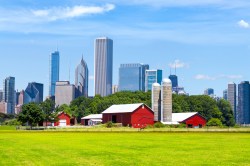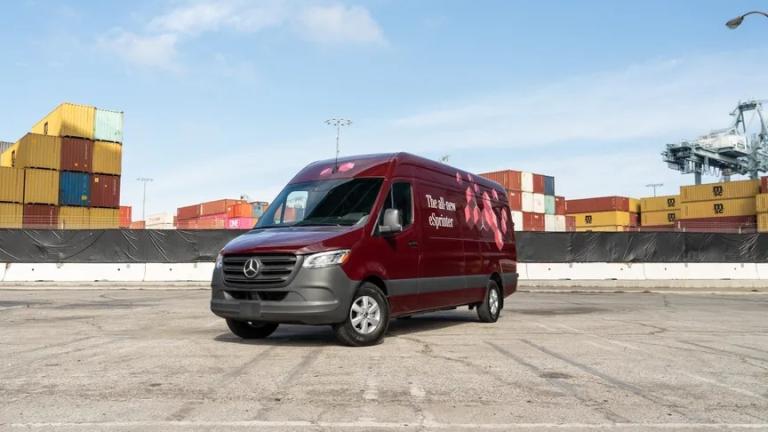In 2006, the developers of Olive 8 — a swanky hotel/condo complex planned for downtown Seattle — were looking for a way to build beyond the 300-foot height limit that zoning allowed. Doing so required some compromises — but not the kind of backroom deal residents of Chicago or Baltimore might assume. Instead, Olive 8 got to build an additional 62,000 square feet of residential space and add three extra floors (making it, at 39 stories, the tallest residential building in Seattle) through a mechanism that promotes urban density at the same time it preserves land that supplies the city’s farmers markets, drinking water, and appetite for wilderness adventure.
The tool, called “transfer of development rights,” or TDR for short, sounds wonky enough to scare off even the more serious urban-planning nerds among us. But consider that, in return for letting Olive 8 stretch a little higher into Seattle’s skyline, residents of King County got a 285-acre forest preserve at the county’s rural edges — killing two smart-growth birds with one stone, all through that paragon of American enterprise: the free market.
Here’s how it worked: Sugarloaf Mountain, 35 miles from downtown Seattle, was slated to be carved up into 56 residential lots. To stop the project, King County offered to buy the development rights to the property, and in 2000, the owners agreed. The landowners still held the title to the property, but they would never be allowed to bulldoze it. The development rights went into the county’s TDR bank, where the Olive 8 developers bought them up in exchange for the ability to build bigger.
When used this way, TDRs encourage more of the kind of density essential for creating walkable cities with lower carbon footprints, while allowing cash-poor landowners to get some money out of their property without subdividing. Landowners are still free to sell (though they’re likely to get less than they would have otherwise, since the new owners won’t be able to develop the place, either). As John Zawitoski, program administrator for farmland preservation in Montgomery County, Md., puts it: “You sell the farm without selling the farm and still maintain the ability to sell it again.”
The idea of TDRs first got widespread exposure in the 1970s, after New York City began using them to protect historic buildings while still making room for new development. That’s when Gene Duvernoy, president of Forterra, a Seattle land-conservation group that helped create King County’s TDR program, first heard of the concept. “I thought they’d be widespread within two years,” he says. “I was off by probably 35 years. Creating a marketplace is not an easy thing.”
The marketplace component is the key difference between TDRs and other traditional methods of land protection, such as conservation easements. With easements, local government and land trusts typically purchase development rights and then extinguish them — that is, they’re not transferred anywhere else; they’ve been bought but will never be resold. But this strategy relies on a flow of conservation dollars that often can’t keep up with the pace of development.
“If you look at [the Seattle] region, there’s roughly 60,000 acres of working farm and forest land that does not have any kind of property rights protection,” says Duvernoy. “There’s a lot of real estate value in that land — a couple billion dollars, no doubt. You could never raise enough money to buy the development rights; you could never have enough public money. But you might be able to create a marketplace.”
“TDR … creates this revolving funding source, where if we buy those [development] rights and then sell them, we recoup the initial outlay, and we can use that money to buy additional land,” explains Michael Murphy, manager of King County’s TDR program. And, he says, there’s the fact that “it’s voluntary and incentive-based, rather than a mandate … so it’s appealing to a broad spectrum of people.”
Of course, TDR is not without its critics. Many green-minded people will celebrate density until it arrives in the form of a high-rise condo next door. But this hesitation is about more than just NIMBYism: Anna Nissen, a design professional in Seattle who takes a critical eye to TDR, points out that upscale development — like Olive 8, for example — drives up property values and hastens gentrification. “The poor, the working class, and their employment have been bounced out of central cities that unaccountably are making matters worse by designating dizzying amounts of increased density,” she writes in an email. “TDR rides aimlessly on top of all that.”
There’s no substitute for comprehensive planning, strong zoning ordinances, and public support, a fact which “is not widely understood,” Nissen writes. Plus, for any marketplace to work, there needs to be sufficient supply and demand, and with the economy what it is, developers are not exactly clamoring to buy TDRs.
“Creating a marketplace is not an easy thing,” Duvernoy says, and the logistical and political hassles of running a TDR program could be the reason they still haven’t taken off in the way he once imagined they would.
And even well-administered TDR programs generally stop short of dictating how protected land can be used. King County writes its conservation easements with terms specific to each property, says Murphy — although some farmers have criticized the county’s broad definition of what counts as “agriculture” (equestrian uses, for example).
Still, with add-ons like tax increment financing (which King County hopes to implement), partnerships with established land trusts, and input from both rural and urban communities, TDR programs can help curb sprawl, preserve valuable resource land, create urban density that city dwellers can embrace, and boost local economies overall.
“City residents … recognize that their farmers markets, their recreation choices, are those lands,” Duvernoy says. “Creating a sustainable region … [means] you can’t just look at farms and forests and you can’t just look at the city. You need to conserve both, and both need to do better.”




